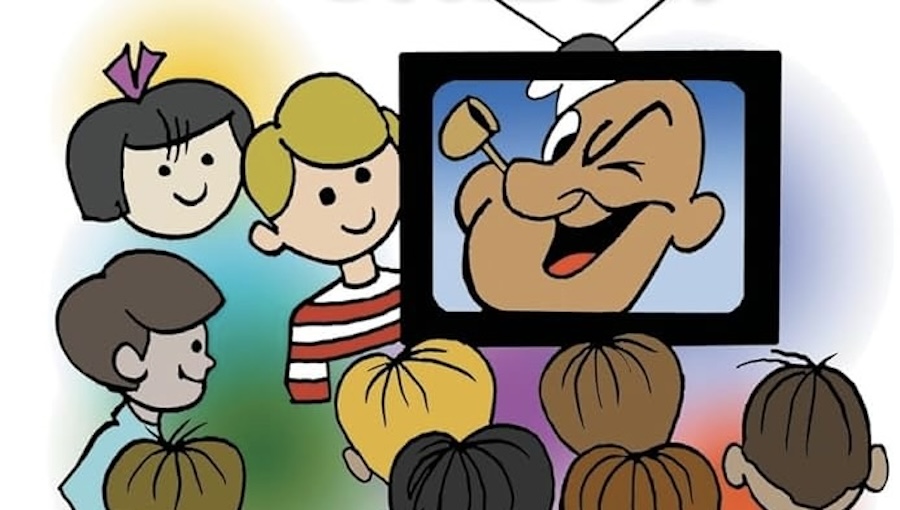The following is an interview with Fred Grandinetti regarding the recent release of the book, Popeye the Sailor: The 1960s Television Cartoons. In this interview, Fanbase Press Editor-in-Chief Barbra Dillon chats with Grandinetti about his experience in researching the cartoons, what today’s readers may find interesting about the series, and more!
Barbra Dillon, Fanbase Press Editor-in-Chief: Congratulations on the recent release of Popeye the Sailor: The 1960s Television Cartoons! For those who may be unfamiliar, what can you share with us about the premise of this biographical release?
Fred Grandinetti: The premise was to explain the history of the Popeye television cartoon series. These were quickly put into production due to the surprising success the theatrical Popeye films were having on the small screen. These theatrical episodes consisted of the black-and-white cartoons produced by Max Fleischer and later color films from Famous Studios. Both were distributed by Paramount Pictures from 1933 through 1957. Additionally, they were reissued to theaters until the mid 1960s. When the Fleischer/Famous cartoons premiered on television in 1956, the ratings went through the roof and Popeye became an extremely hot property. Hundreds of new Popeye products lined store shelves. Records and coloring books billed the sailor as TV’s Most Popular Cartoon Star!
BD: As the co-founder of the International Popeye Fan Club, you are a knowledgeable individual when it comes to all-things Popeye. How would you describe your research process in preparing for this book, as well as your creative process for distilling the narrative into one collected volume?
FG: Unfortunately, King Features Syndicate which controlled the rights to the one-eyed sailor and his crew earned no residuals from the constant replaying of the older films. They wisely decided to hire six animation studios to crank out 220 color episodes from 1960 through 1962. The rushed production schedule resulted in several poorly animated cartoons. For example, Popeye’s pipe would be on his chin one moment and gone the next. Short-sleeved clothing would suddenly become long! Scenes from previous episodes would be reused in later films. Due to these short-cuts in animation many tend to believe the entire series is terrible. That is simply not the case.
BD: Through your research process, was there anything that you found which surprised or intrigued you about the cartoon series?
FG: The research process involved literally watching all the cartoons. I had to note the animation mistakes in each episode and also the highlights. A memorable episode would be one featuring a character from the Popeye comic strip who was not previously animated.
A surprising facet of the cartoons were how many stories originated in Popeye’s daily and Sunday comic strips from the 1930s. Paramount Cartoon Studios, one of the suppliers, would take a daily story which went on for months and adapt it into a 5-and-a-half-minute cartoon. The studio did the same thing for a Sunday page. The cartoons retained the humor which originally appeared on the printed page. It may also come as a surprise how financially successful the series was. According to an article in the October 25, 1961, edition of Variety; King Features Syndicate sales of the new Popeye cartoons have just passed the $4,500.00 mark.
BD: What do you feel will be most appealing to new and seasoned Popeye readers within the pages of Popeye the Sailor: The 1960s Television Cartoons?
FG: The “seasoned” edition includes a section of what I felt were the best episodes in the series. These were cartoons which I have fond memories of watching as a child or have unique story lines. For example, Spinach Shortage, has Brutus cornering the spinach market leaving none for Popeye to consume. I also highlighted personnel who were involved with a particular cartoon whether it be a musical director or vocal performer. An additional fifty graphics have been added to the updated edition.
BD: Are there any other projects that you would like to highlight for our readers?
FG: I’m always working on projects to promote Popeye. Starting in my 30s, I began donating Popeye items to children’s hospitals and hospices. Caregivers tell me he acts as a strength figure. I have also hosted and produced Drawing With Fred for regional cable access channels for 32 years. The program features cartooning lessons, original water safety & fitness segments plus classic animated cartoons. The show has won three CONTI awards for excellence in local programming. Clips, from the series, can be viewed at here.
BD: Lastly, what would you like to tell fans who want to learn more about Popeye the Sailor: The 1960s Television Cartoons?
FG: You can find me doodling Popeye and other cartoon characters to raise money for animal shelters and veteran’s causes. As a popular culture historian, my articles on I Dream of Jeannie, Batgirl, the original Batwoman, Catwoman, Bewitched, Popeye’s crew, and others can be found on the web. One of my favorite experiences was becoming friends with Michael Casey who was Barbara Eden’s publicist. Mr. Casey’s earliest job, working on television, was a local Popeye Theatre show.
Anyone who feels these Popeye cartoons “are all junk” (which I have heard often) should check the book out. You may be surprised how inaccurate your estimation of the series is.
These adventures of the one-eyed sailor continued to air on several television stations well into the 1990s and currently can be viewed on You Tube’s Official Popeye channel at Popeye And Friends Official – YouTube.

